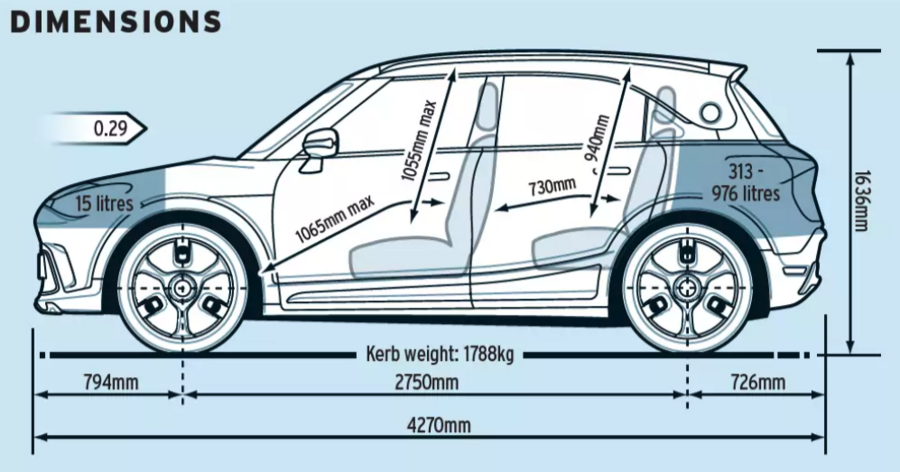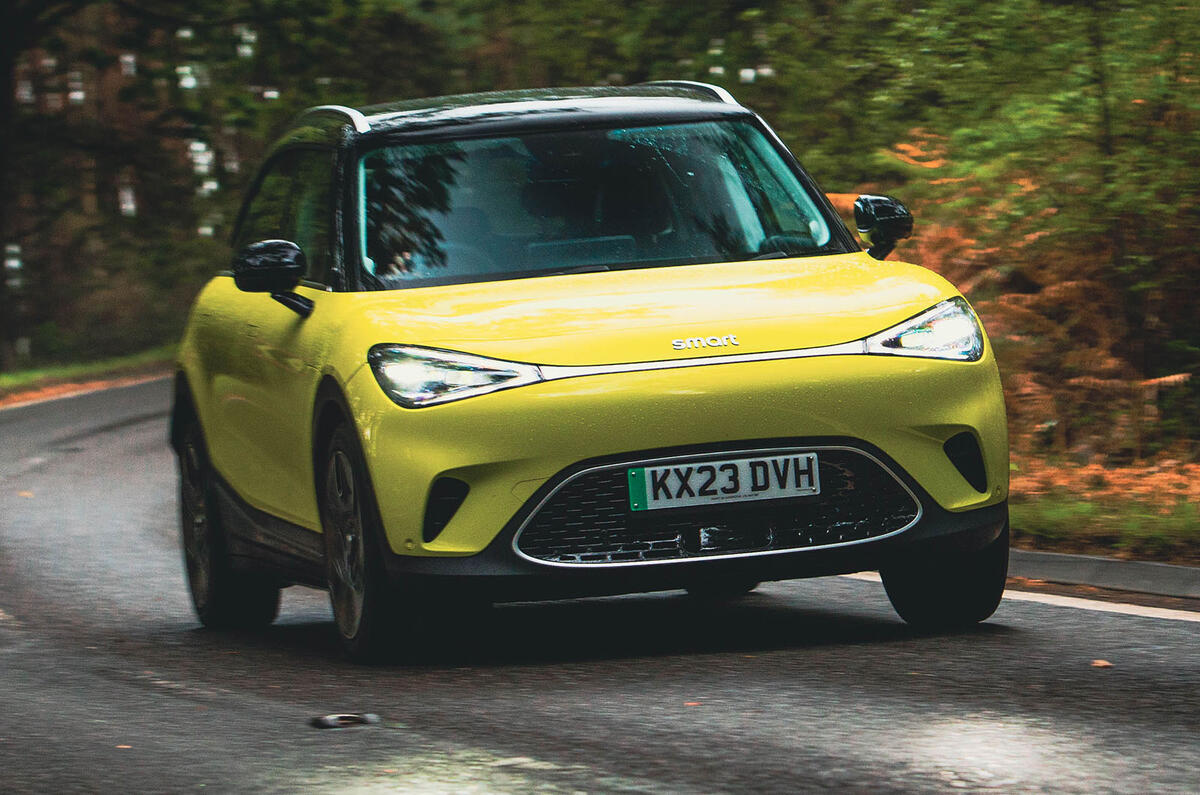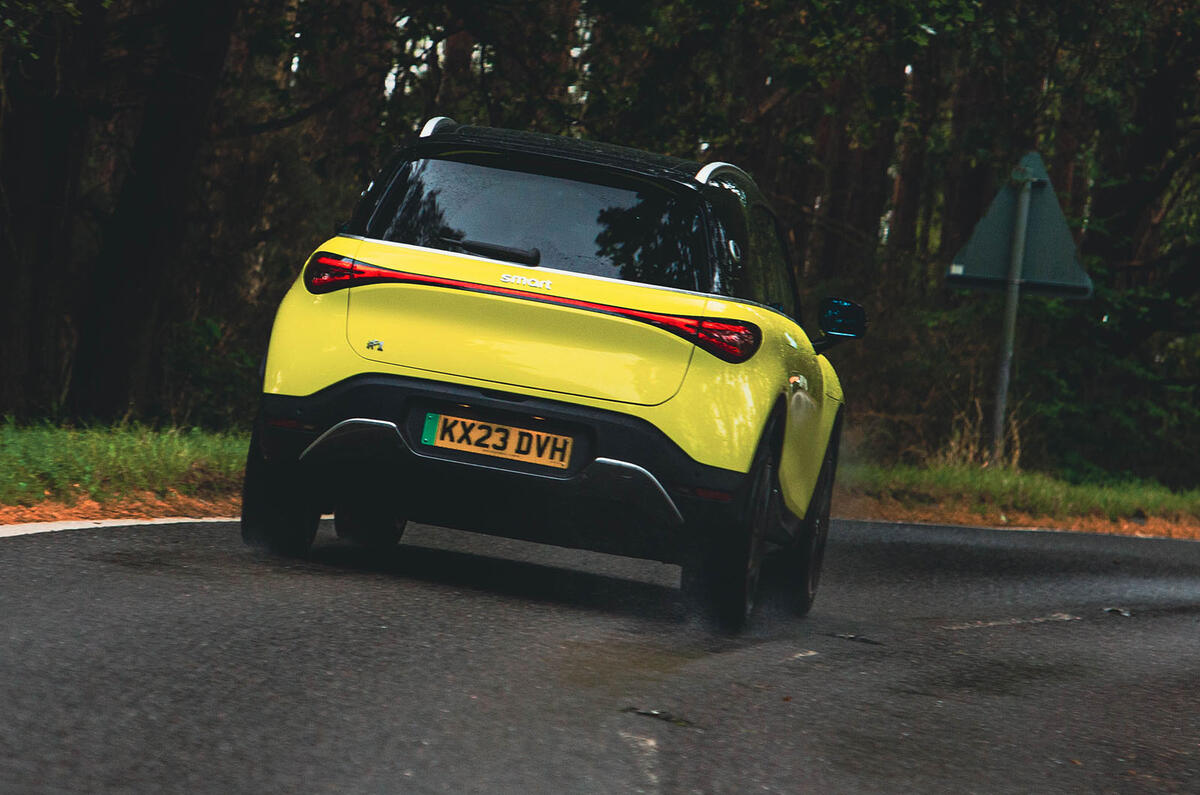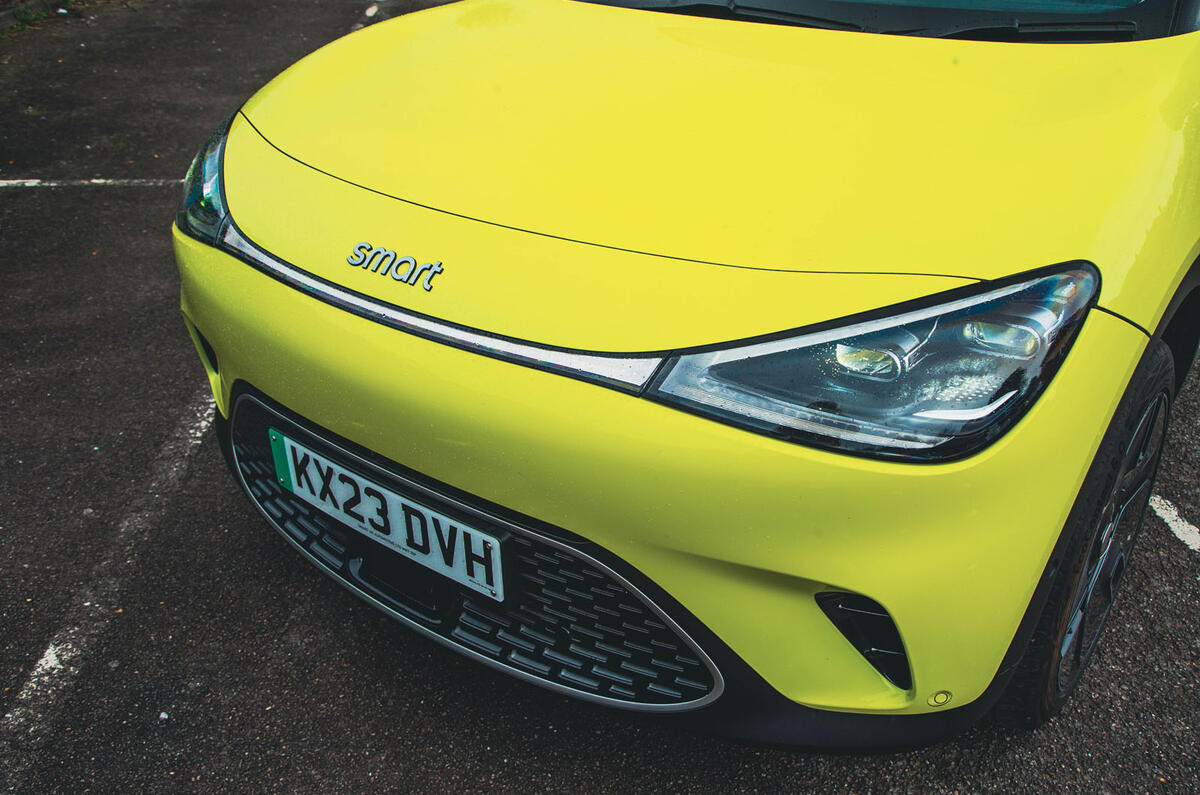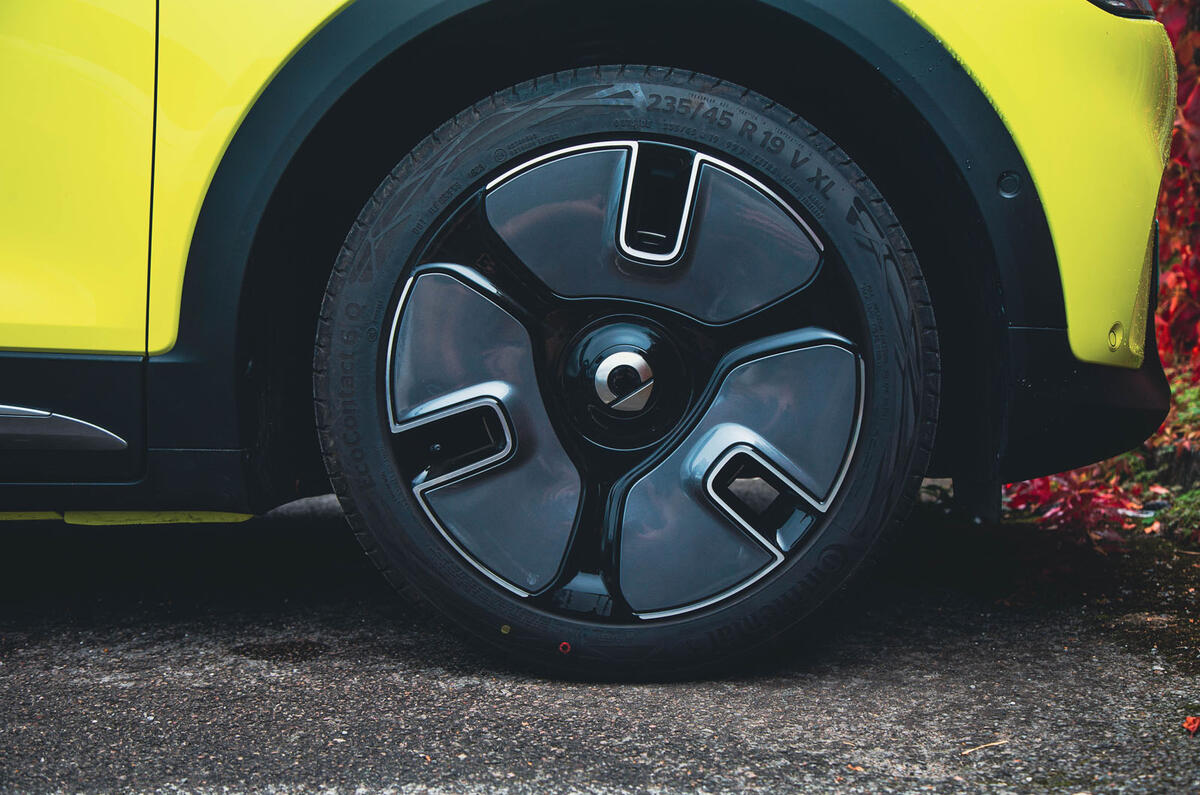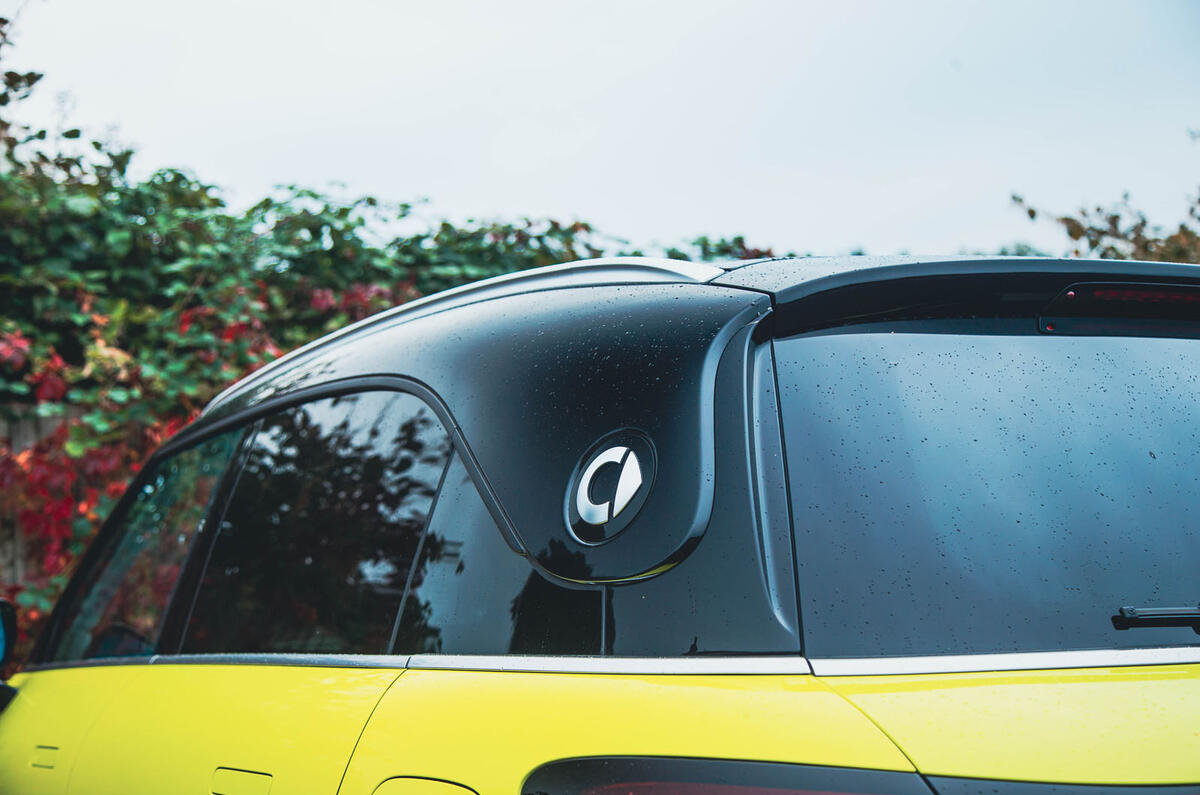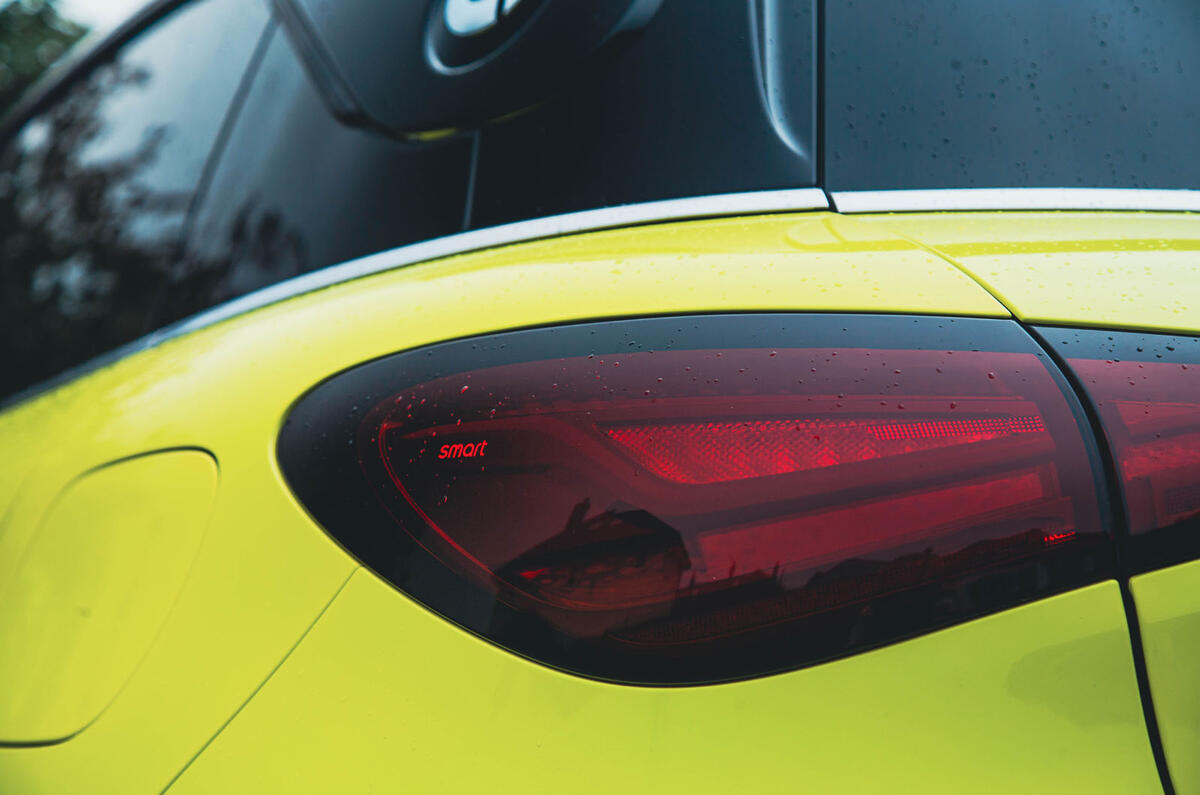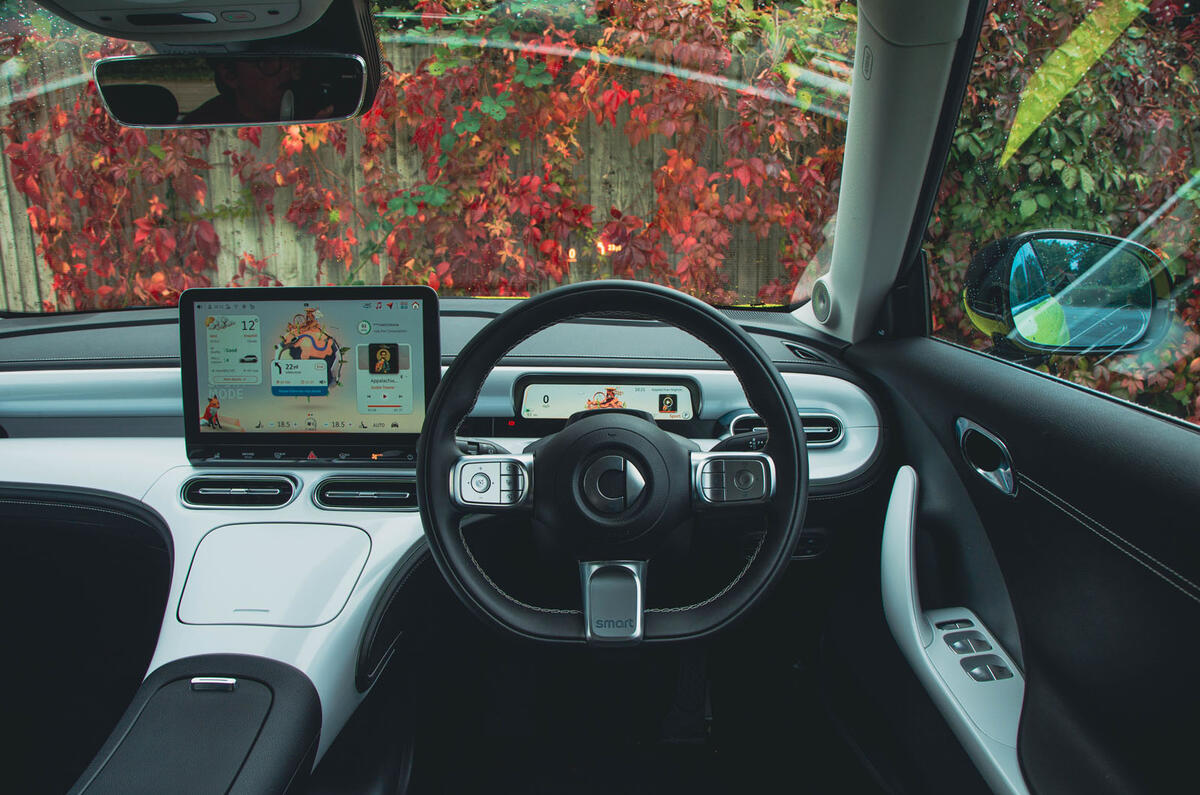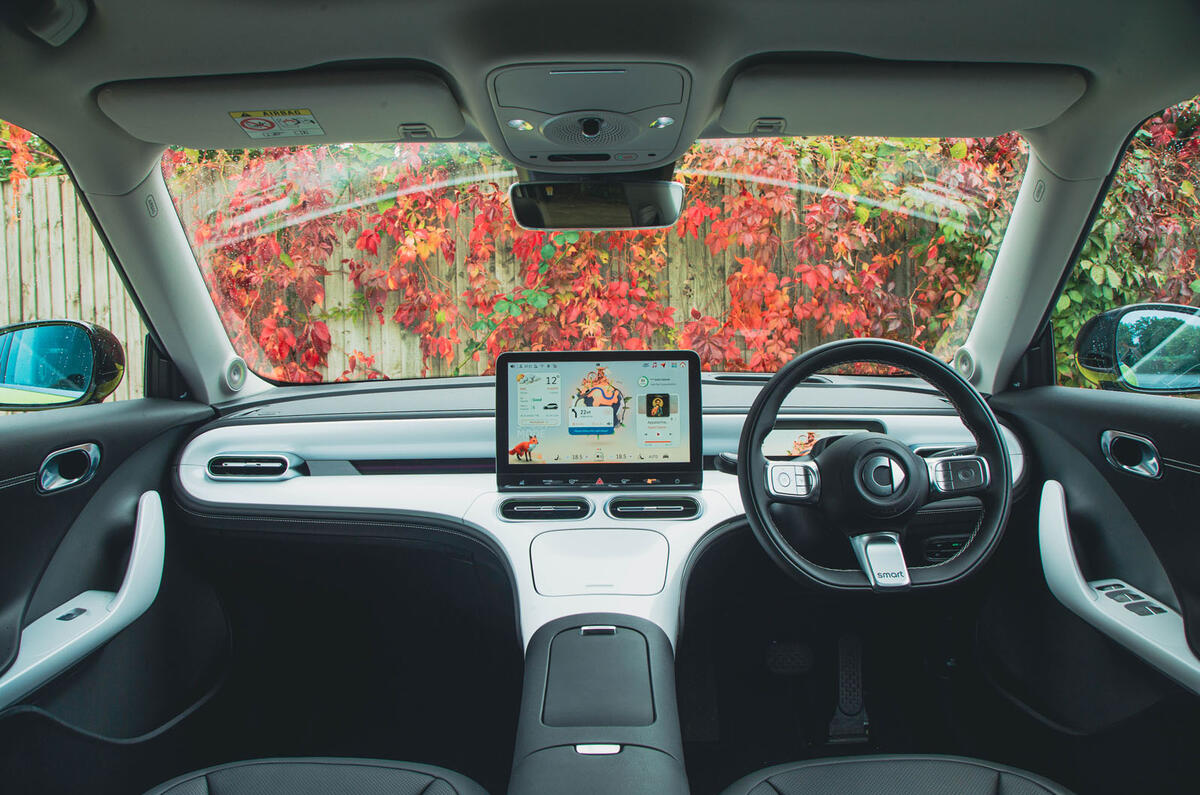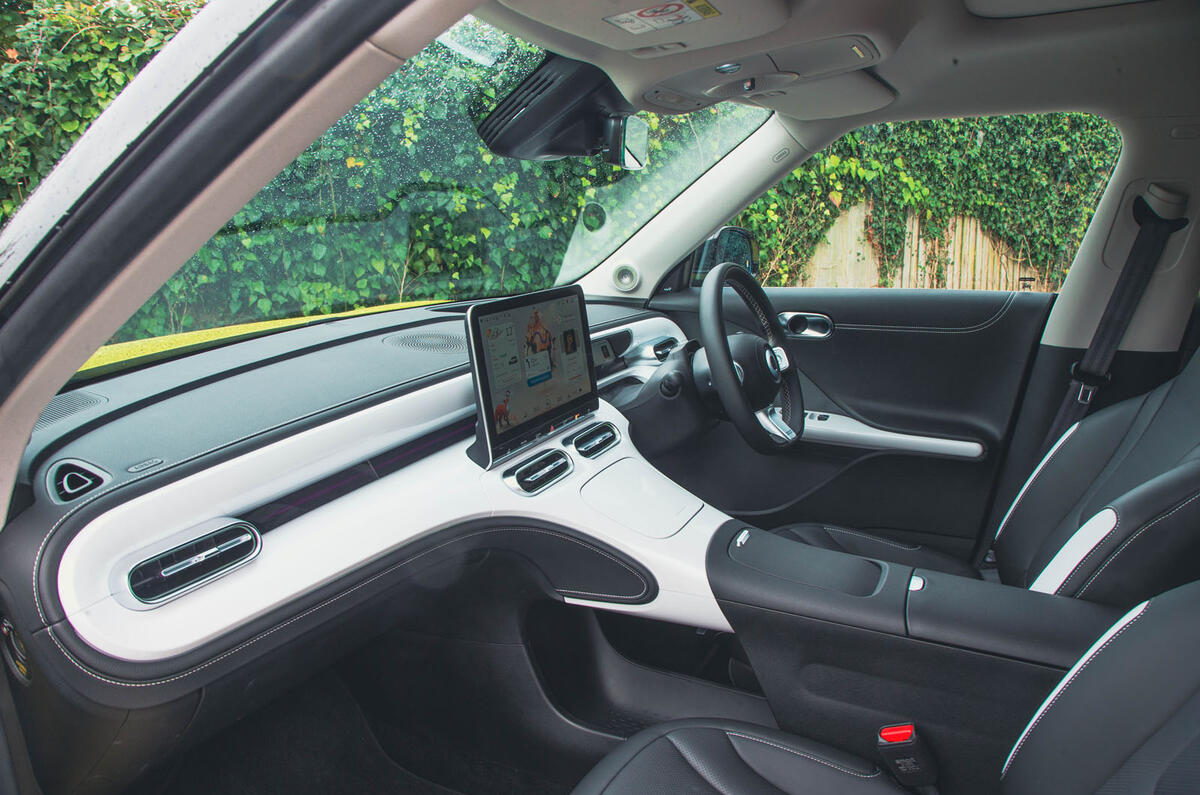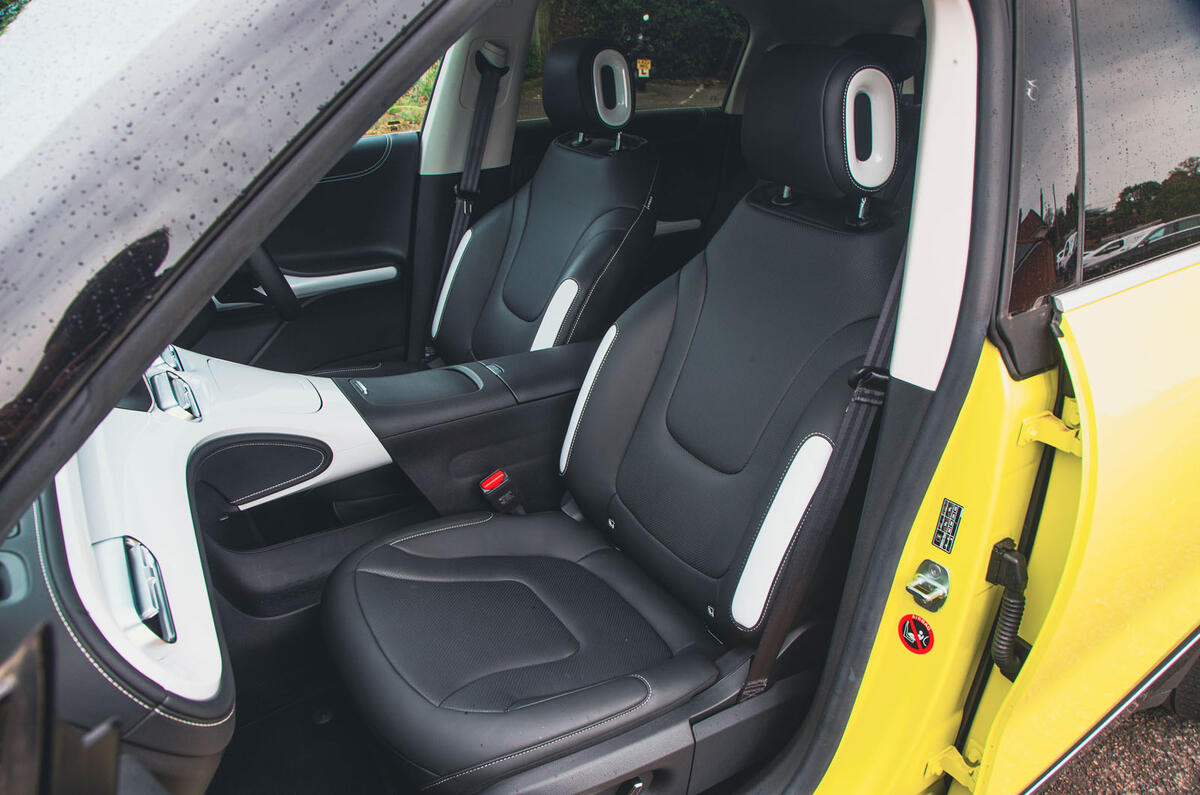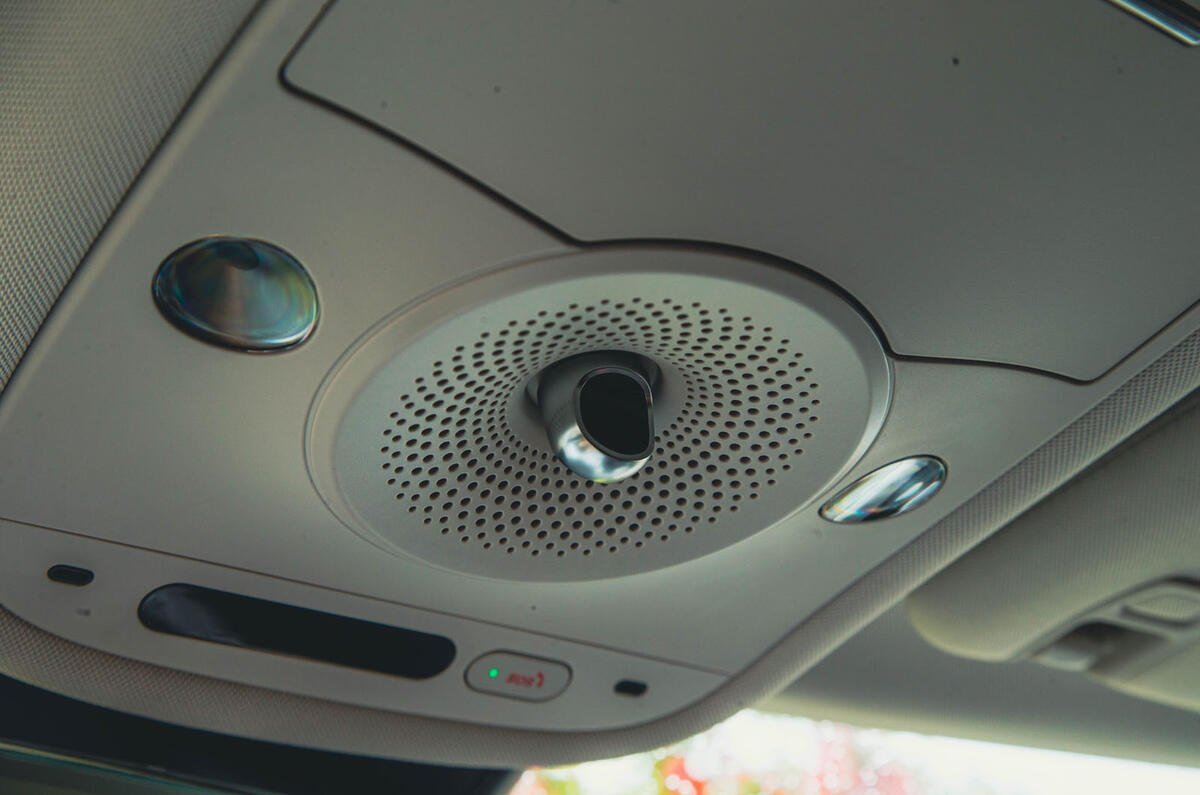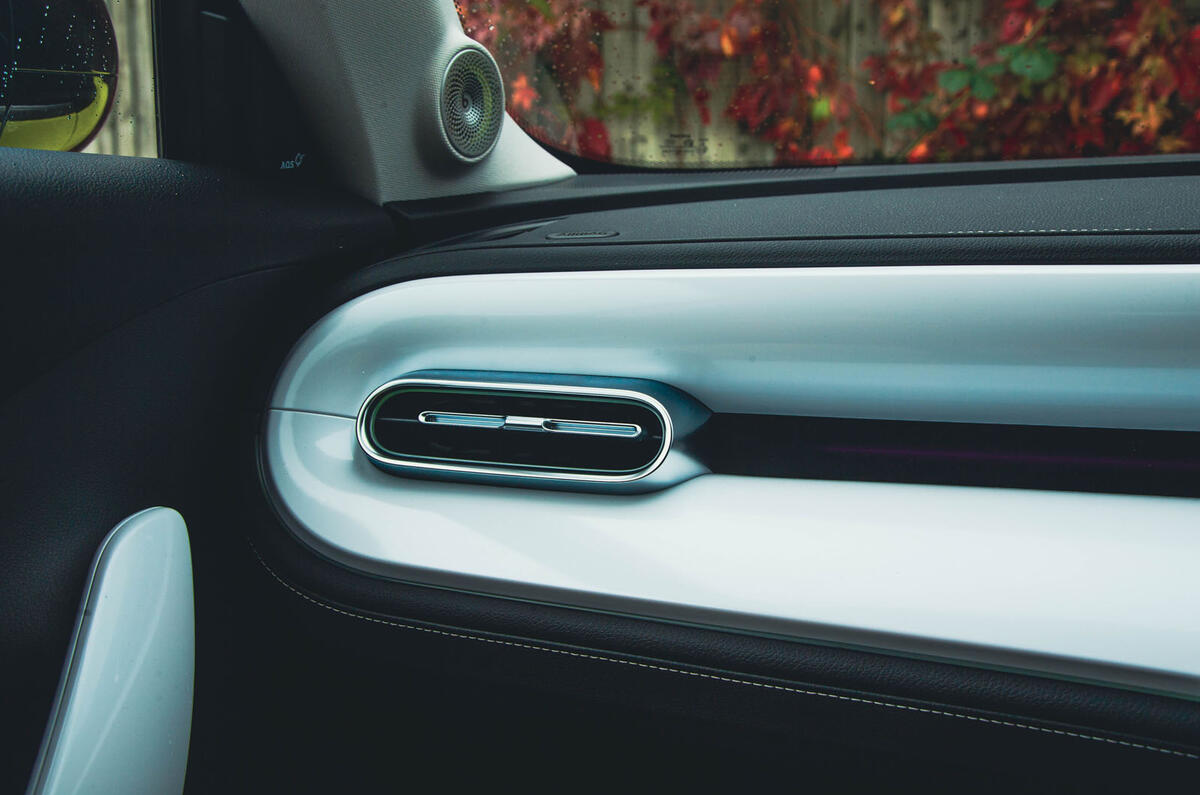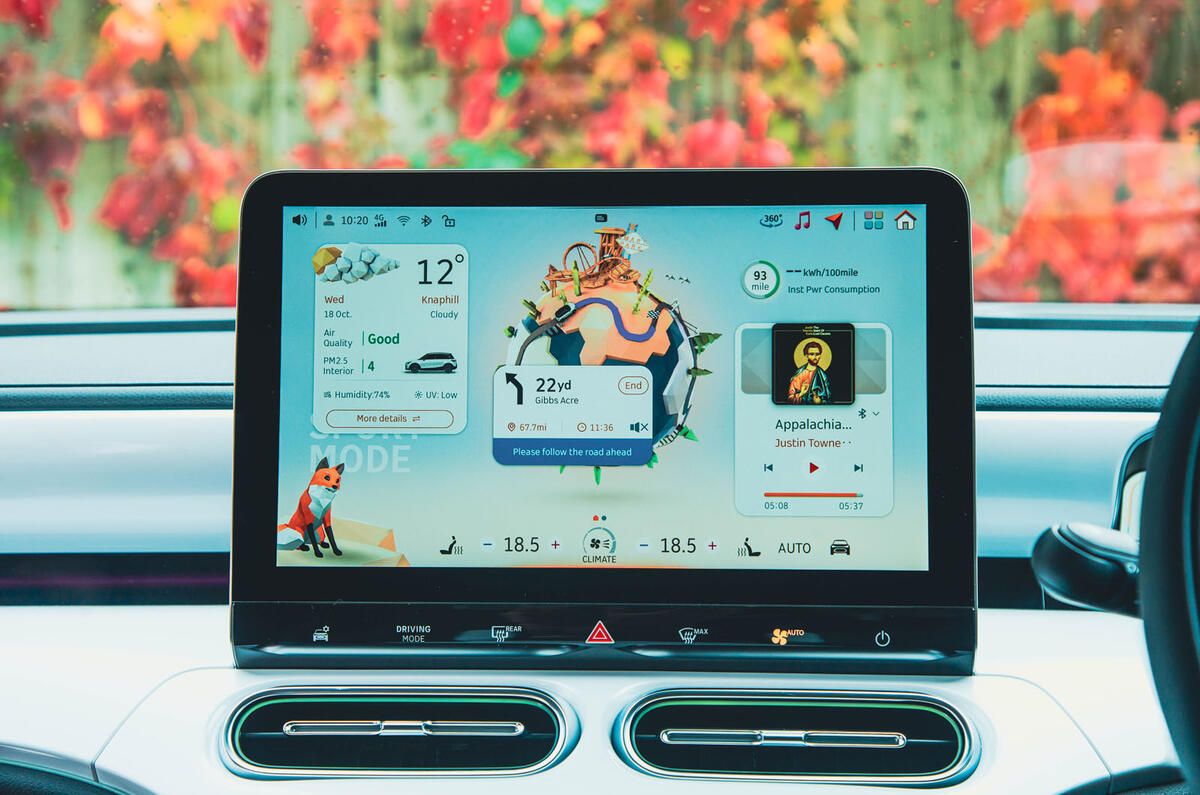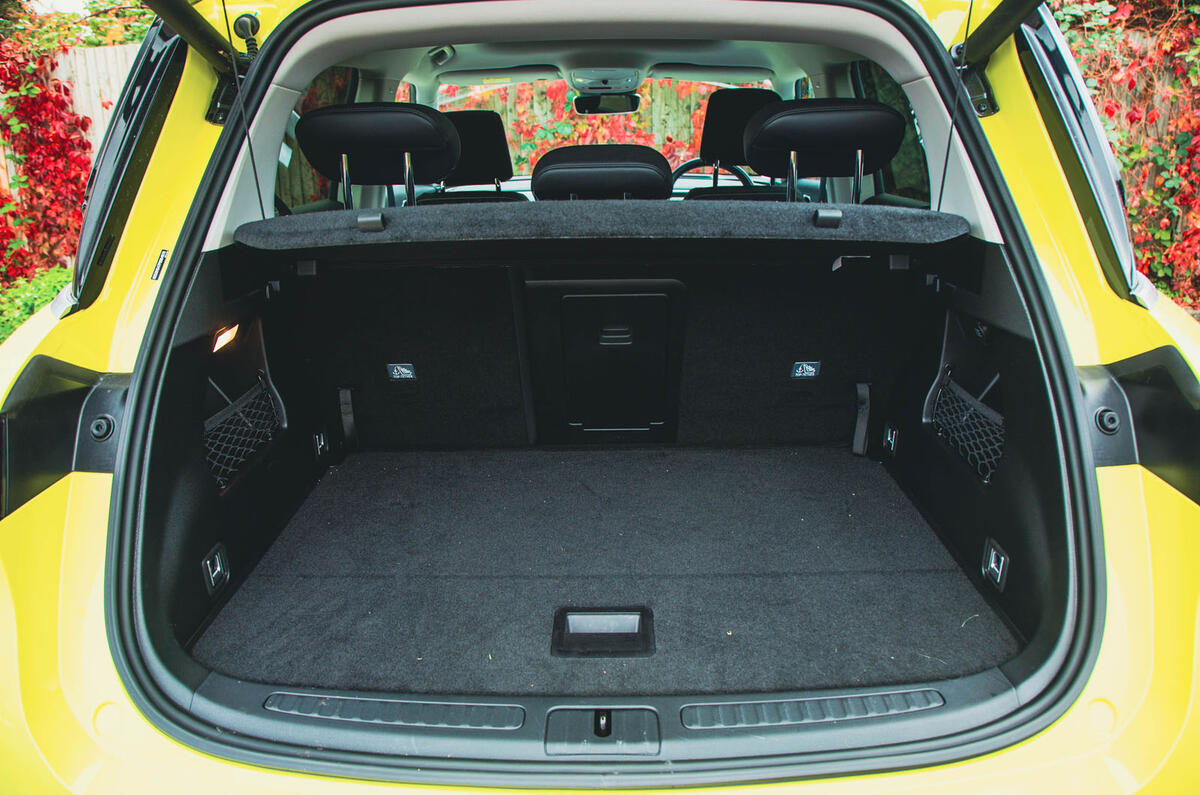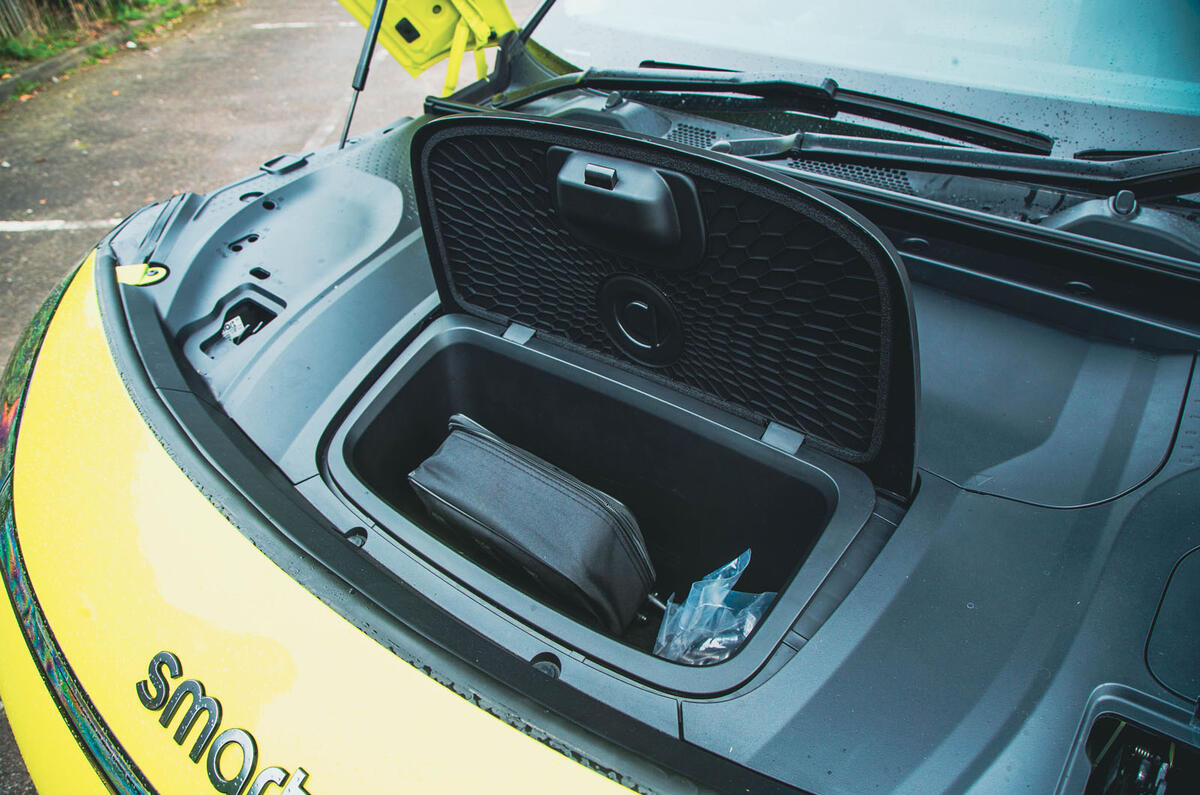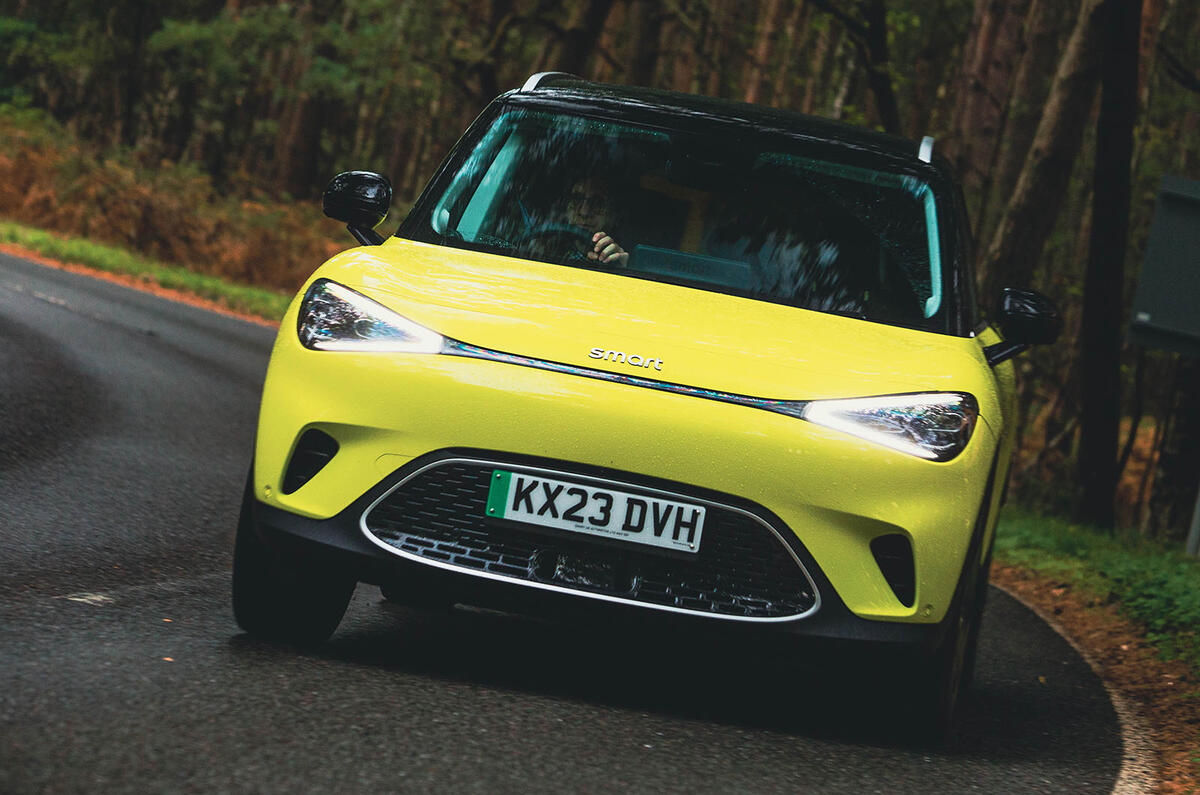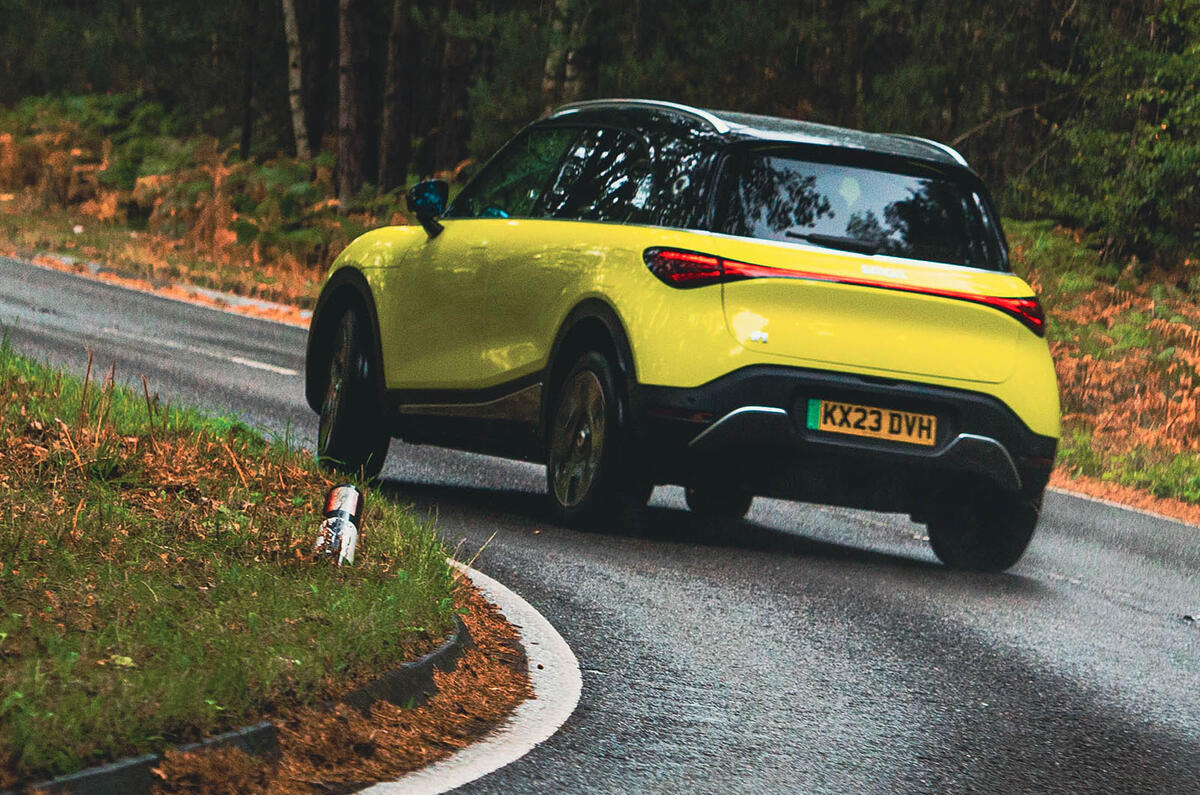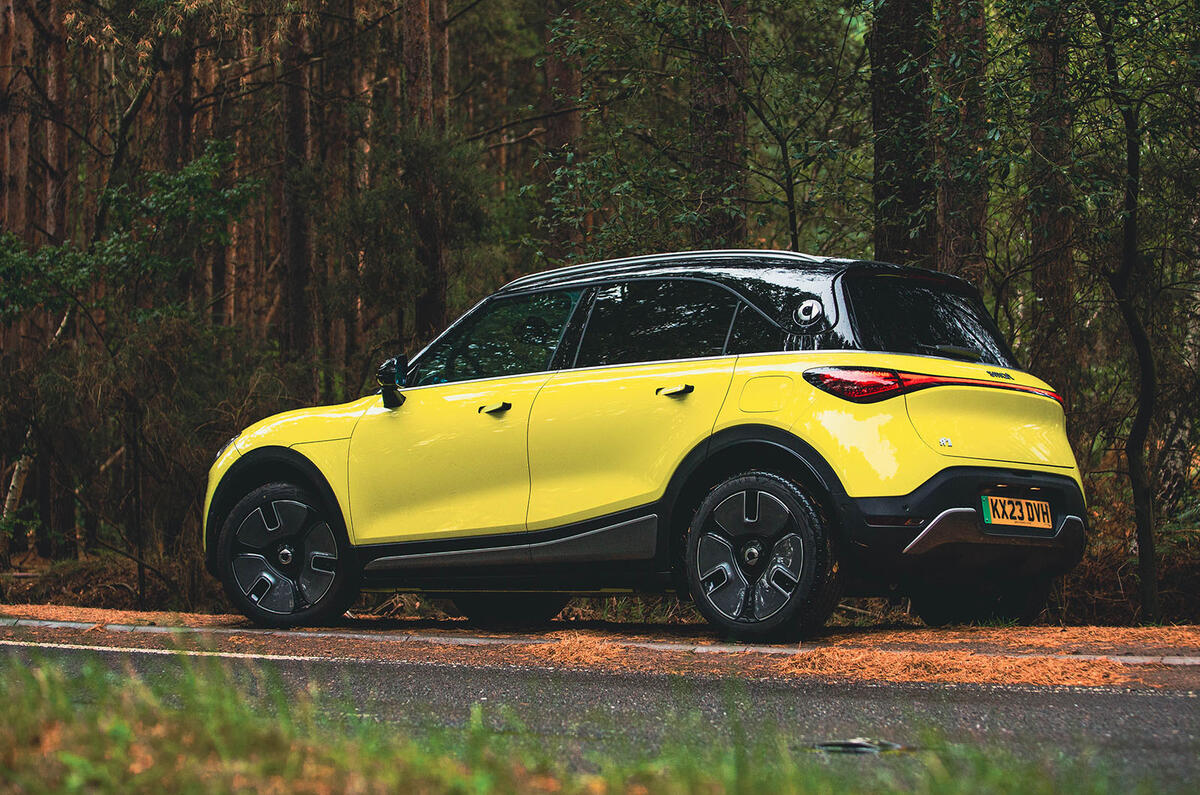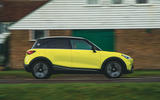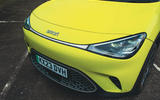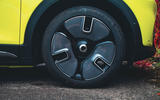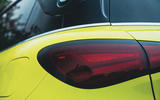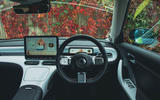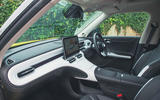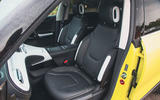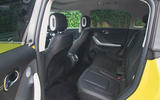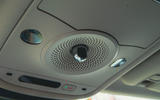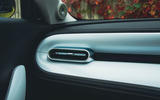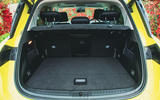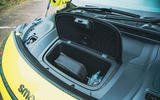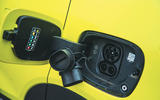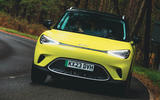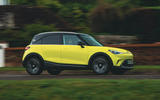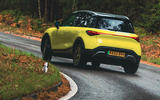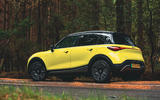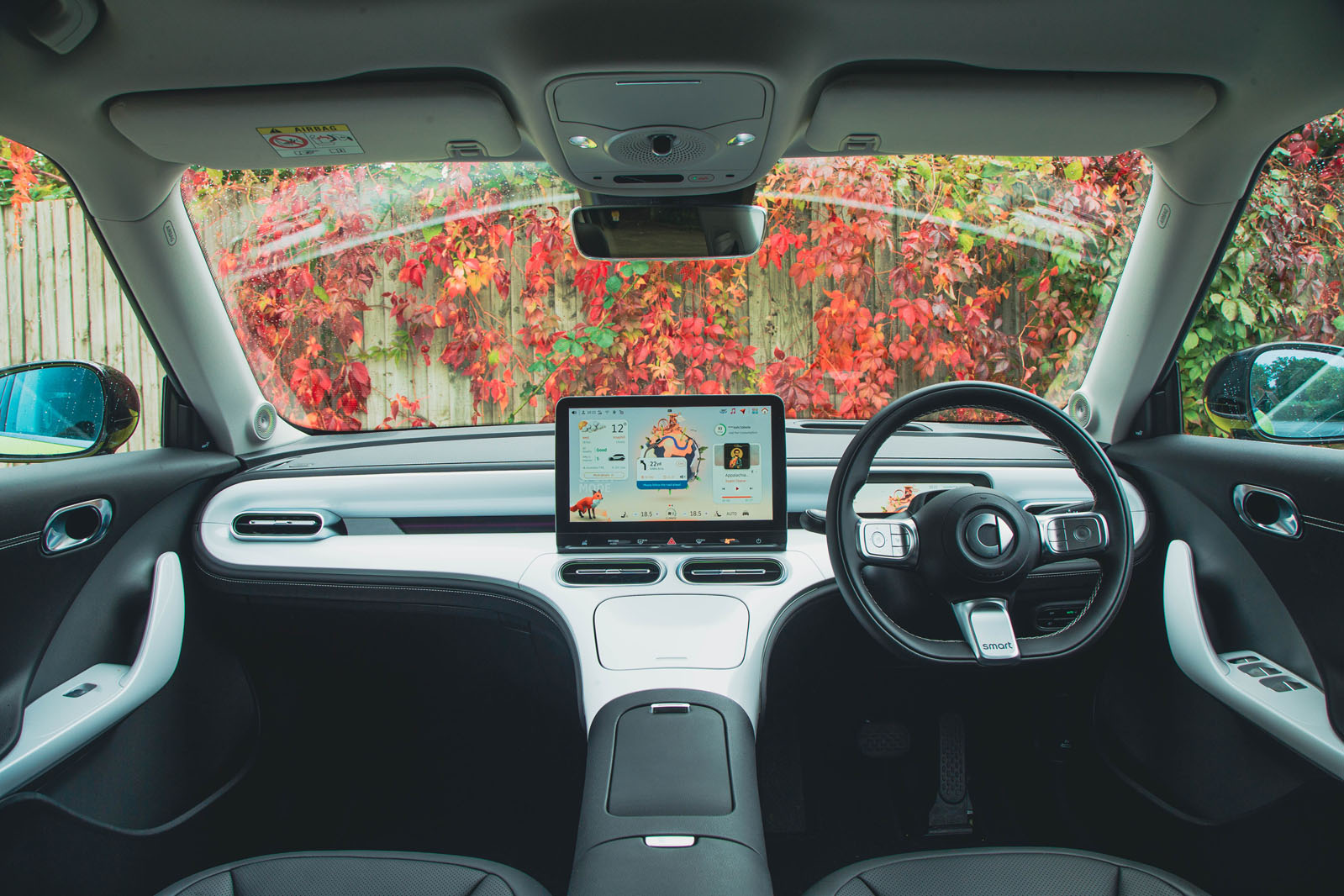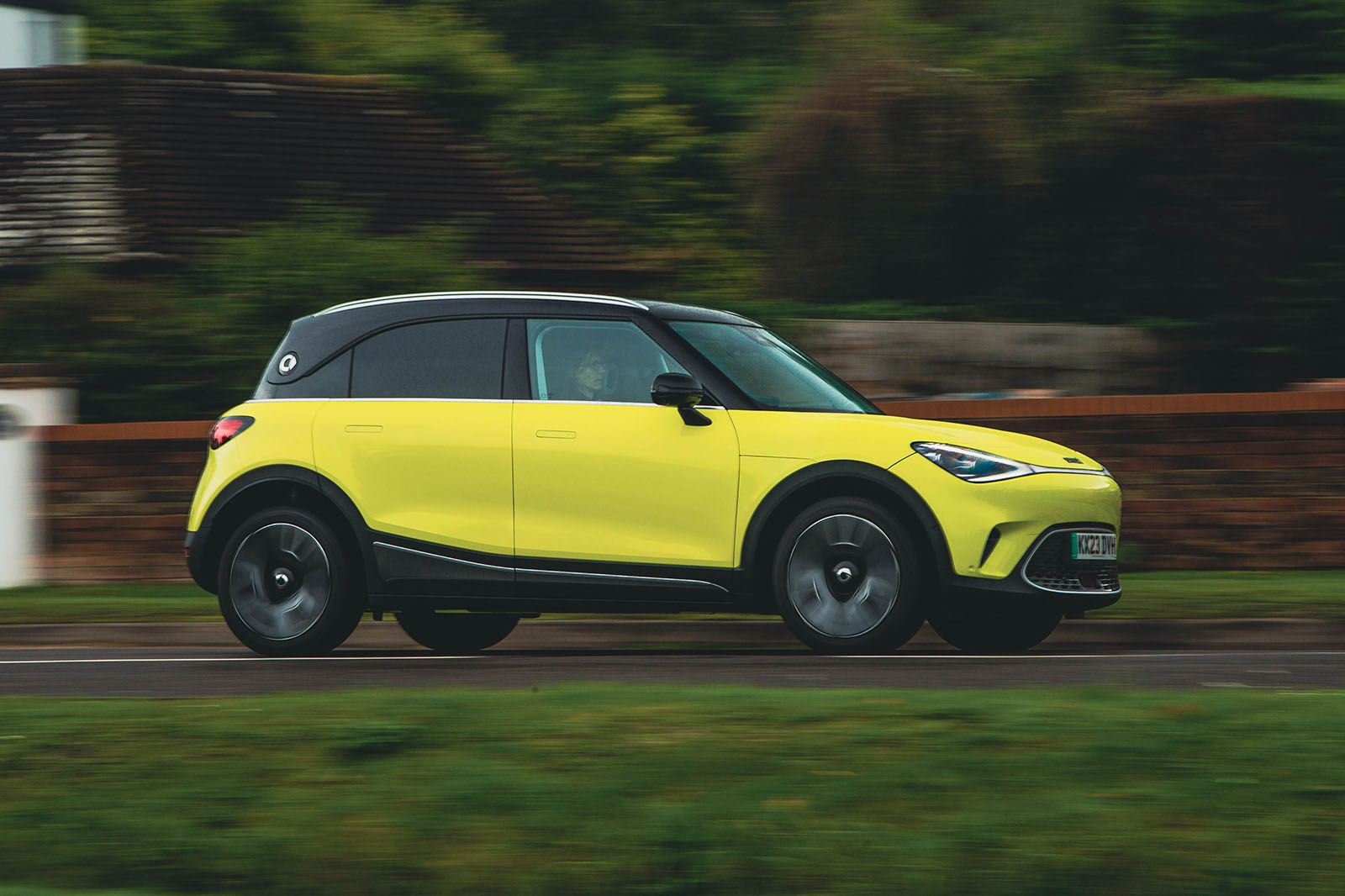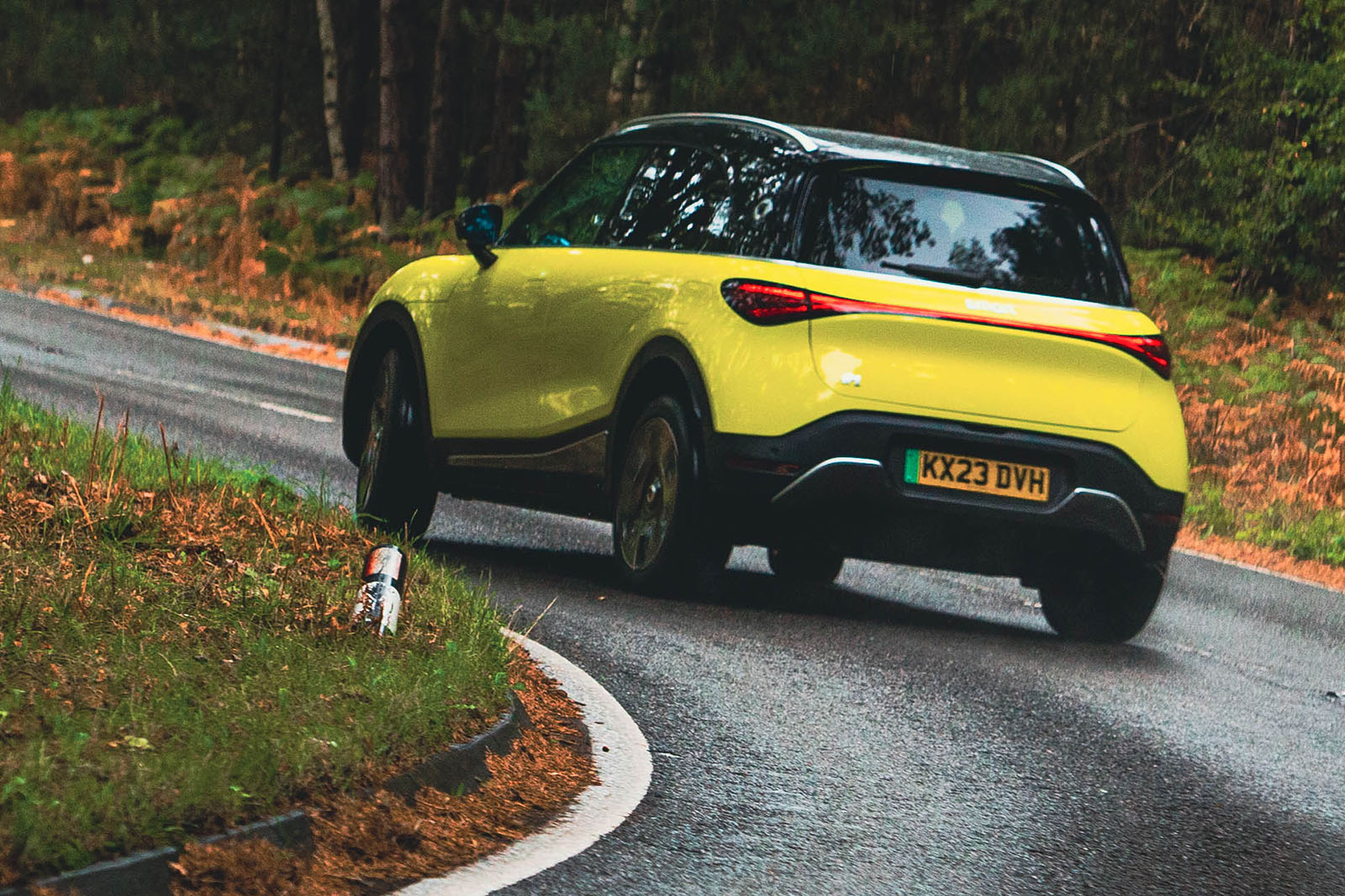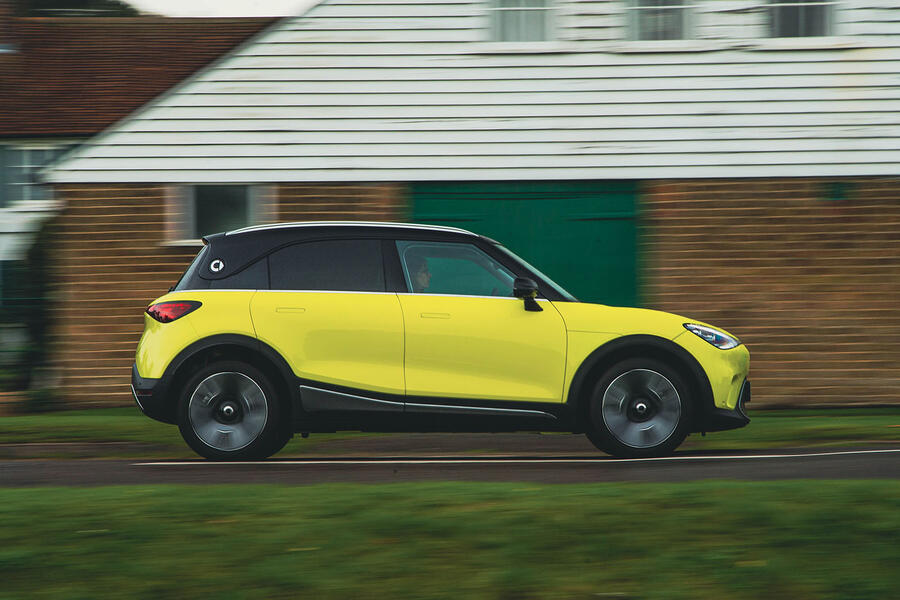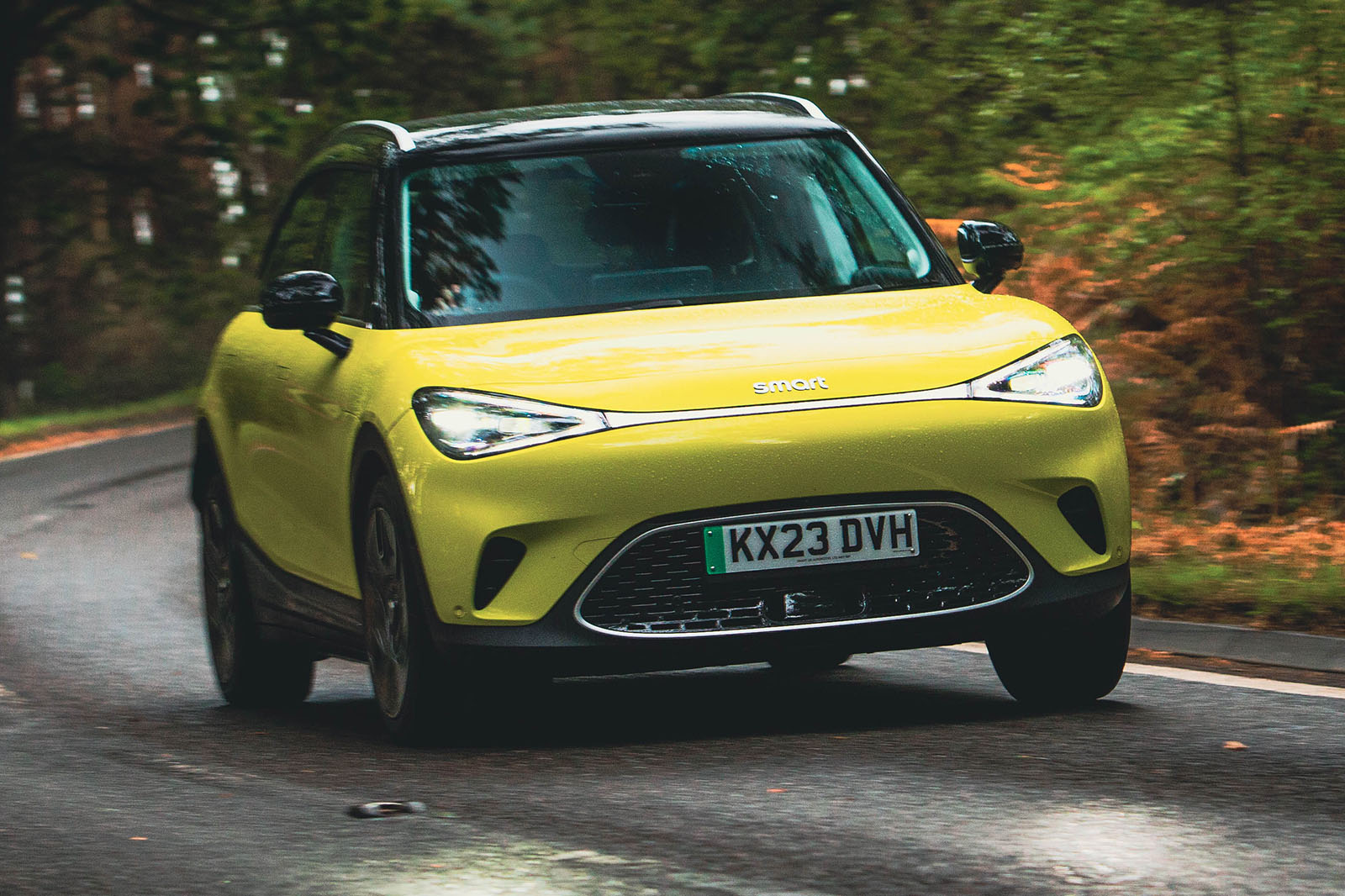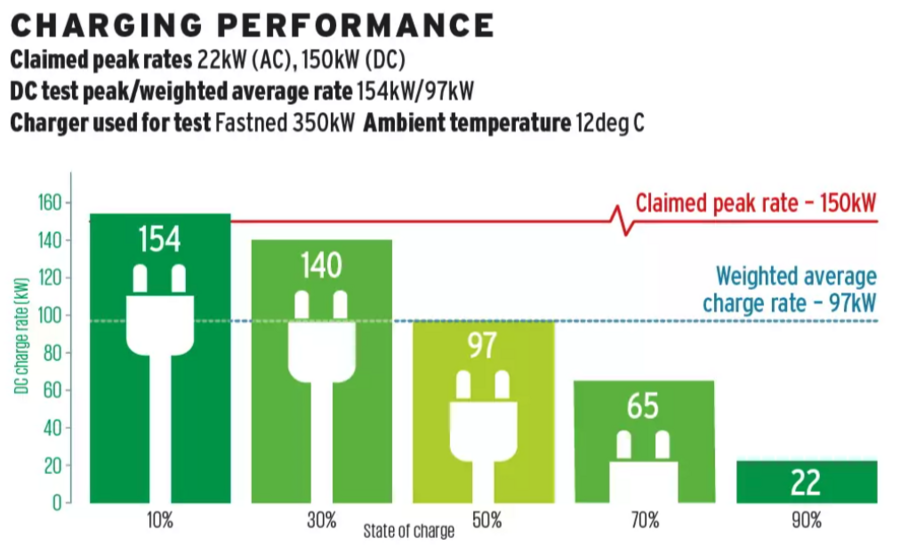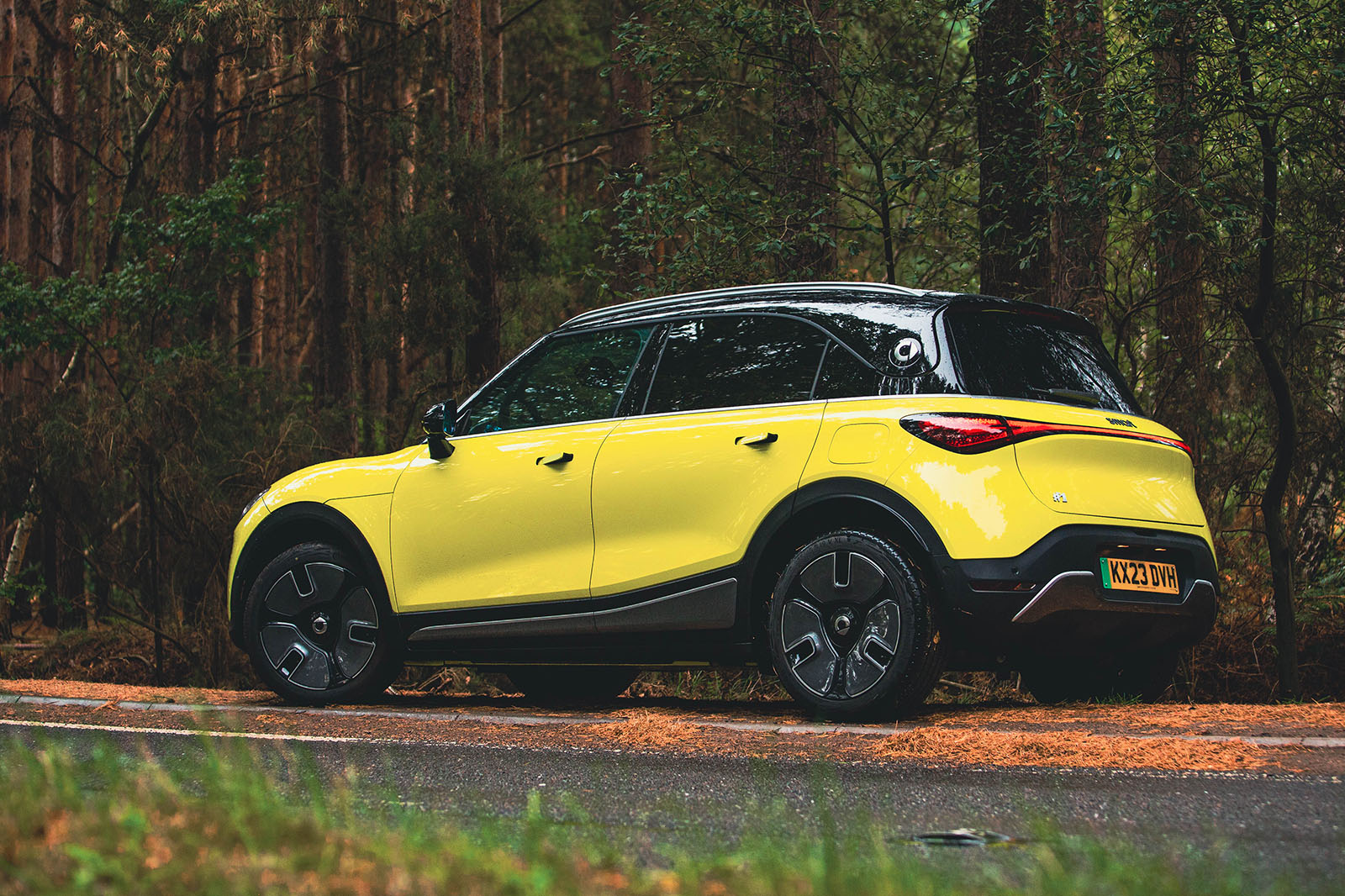That shorter length puts the #1 roughly in the middle between the MG 4 and Renault Mégane E-Tech on the one hand and the Cupra Born and Kia Niro EV on the other.
And so it goes for interior roominess. That’s reflected in the rear leg room, which isn’t quite as generous as the best in this class but perfectly adequate for adults. However, as with quite a few Chinese cars, boot space is where the Smart stumbles. At 313 litres, it’s quite some way behind even the MG 4’s 363 litres, never mind the Niro’s cavernous 475 litres.
It’s a square shape, though, with some useful extra space under the floor, and it claws back some points with a sliding rear seat, which is neatly designed with some spare carpet to cover up the gap between the seat and the boot floor. Even so, rivals are easily more practical. Up front, the vibe in the #1 echoes the exterior design, with a strong Mercedes-Benz family resemblance.
The rounded centre console with three bins is very Mercedes but somehow fits the Smart’s cheerful demeanour better. It’s very practical too and there is a big tray on the floor for bigger items.
The white pearlescent finish (grey metallic on cars with white seats) is novel and doesn’t attract fingerprints like the ubiquitous gloss black. Sure, it’s made of hard plastic, but that’s easier to accept here than in a £120,000 EQS. In general, soft-touch materials cover most of the surfaces that you’re likely to touch, which is something that can’t be said of rivals such as the Born and MG 4.
The whole interior is full of white ‘squished donut’ shapes. They’re on the sides of the headrests, on the dashboard, and even on the handle of the charge cable. Despite the black leather of our test car, they help give the #1 quite a bright, airy, fun atmosphere.
That feeling is augmented by the big upright glasshouse. In that sense, the #1 is the opposite of the letterbox Mégane E-Tech. Aside from the small boot, we have one big complaint and it’s a very familiar one in 2023: the lack of buttons. In some ways, this is handled better than in other cars because the screen gives easy direct access to the climate control and a number of secondary controls. However, having to go into a menu to adjust the side mirrors is particularly annoying.
Multimedia system
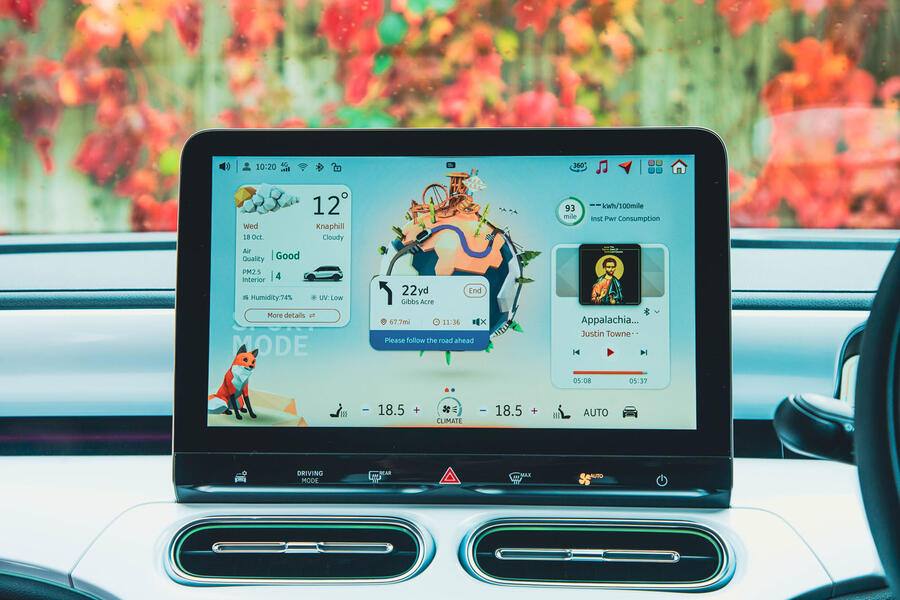
When we drove a left-hand-drive car earlier in the year, we were promised that Apple CarPlay and Android Auto would feature from launch, so when we got this test car in October, we connected our phone with great anticipation, only for nothing to happen.
They’re now supposed to arrive in an over-the-air update this month. It’s a poor show and we can’t test how well the phone mirroring integrates with the native interface.
Smart almost gets away with not offering it, because it’s a very good system. The home screen uses the available space to good effect to show you concise navigation, trip computer and media info at a glance, as well as keep the climate controls in permanent view. A shortcut menu lets you quickly toggle things like lane keeping, regen and ESC.
The native nav is good too. We wish you could send the cartoon fox packing, because its roughly five animations get tiresome after a day. The voice control is largely unhelpful and quite creepy when its robotic voice responds in the first person.
